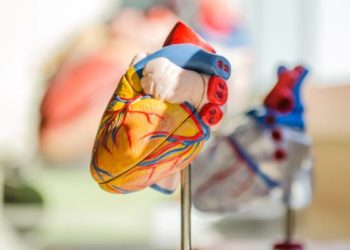Patient Basics: Yaws
Originally published by Harvard Health.
What Is It?
Yaws is an infectious disease that affects the skin and bones. It’s a tropical illness that was once common in West Africa, Indonesia, New Guinea, the Solomon Islands, Haiti, Dominica, Peru, Colombia, Ecuador and parts of Brazil. In these countries, yaws most often affects children between the ages of 2 and 5, especially children who wear few clothes, have frequent skin injuries and live in areas of poor hygiene.
During the 1950s, yaws was a common tropical illness, infecting 50 million to 100 million people. Since that time, the World Health Organization (WHO) has battled yaws in many tropical areas of the world. More than 160 million people have been examined in 46 countries, and more than 50 million cases of yaws have been treated with penicillin. As a result, the incidence of yaws declined dramatically worldwide. This disease always has been extremely rare in the United States.
Yaws is caused by a subspecies of Treponema pallidum, the bacterium that causes syphilis, a sexually transmitted disease. However, yaws is not transmitted sexually. Also, unlike syphilis, yaws does not have the potential to cause long-term damage to the heart and cardiovascular system. Yaws almost always is transmitted by direct contact with infected skin. Yaws has three stages:
- Early yaws — About three to five weeks after a person is exposed to yaws, a raspberrylike bump appears on the skin, commonly on the legs or buttocks. This bump, sometimes called a frambesioma or mother yaw, will gradually grow larger and form a thin yellow crust. The area can itch, and there can be swollen lymph nodes (swollen glands) nearby. The bump usually heals on its own within six months, and it often leaves a scar.
- Second-stage yaws — The next stage may begin while the mother yaw is still present, or it may not start until several weeks or months after the first stage of yaws heals. In this stage, a crusty rash forms, which can involve the face, arms, legs and buttocks. The bottoms of the feet also can become covered with painful, thick sores. If you get foot sores, walking can become painful and difficult, and you may resulting in a crablike gait called crab yaws. Although the bones and joints also can be affected, second-stage yaws usually does not cause destruction in these areas.
- Late yaws — Late yaws develops in only about 10% of people who are infected with yaws. It begins at least five years after early yaws starts, and it can cause severe damage to the skin, bones and joints, especially in the legs. Late yaws also can cause a form of facial disfiguration called gangosa or rhinopharyngitis mutilans as it attacks and destroys parts of the nose, upper jaw, palate (roof of mouth) and part of the throat called the pharynx. If there is swelling around the nose, a person with late yaws can have headaches, nasal discharge. The faces of people with late yaws often develop an appearance called goundou.
Symptoms
Symptoms of yaws include:
- A single, itchy, raspberrylike growth (mother yaw) on the skin, usually on the legs or buttocks, which eventually develops a thin, yellow crust
- Swollen lymph nodes (swollen glands)
- A rash that forms a brown crust
- Bone and joint pain
- Painful bumps or sores on the skin and on the soles of the feet
- Facial swelling and disfiguration (in late yaws)
Diagnosis
Your doctor may suspect that you have yaws based on your travel history, your symptoms and the results of your physical examination. To confirm the diagnosis, he or she will order blood tests to check for evidence of an infection with the bacteria that cause yaws. Your doctor also may take a sample of tissue from a skin sore. This sample will be examined in a laboratory for T. pallidum bacteria.
Expected Duration
The mother yaw often heals quickly with treatment. Without treatment, it usually heals on its own within six months. Later, in second-stage and late yaws, rashes and lesions are more severe and last longer. Without treatment, the symptoms can return over many years.
Prevention
If you have come in close contact with someone who has yaws, your physician may recommend that you receive penicillin or another antibiotic to prevent infection.
Treatment
People with yaws usually are treated with a single shot of penicillin, given in various doses depending on the age of the patient. If you are allergic to penicillin (sold under many brand names), your doctor may treat you with tetracycline hydrochloride (Achromycin, Panmycin, Tetracyn and others), which also has proven to be effective.
When To Call A Professional
Call your doctor if you have symptoms of yaws, especially if you have visited a tropical country.
Prognosis
Treatment of yaws is often successful. The disease is almost never fatal.
External resources
National Institute of Allergy and Infectious Diseases (NIAID) Building 31, Room 7A-50 31 Center Drive MSC 2520 Bethesda, MD 20892-2520 Phone: (301) 496-5717 http://www.niaid.nih.gov/
Centers for Disease Control and Prevention (CDC) 1600 Clifton Rd., NE Atlanta, GA 30333 Phone: (404) 639-3534 Toll-Free: (800) 311-3435 http://www.cdc.gov/







